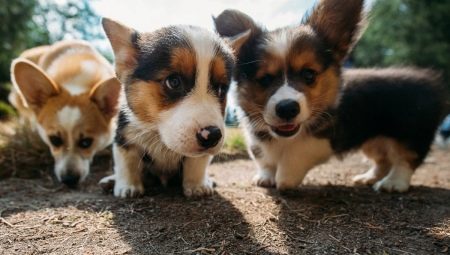Little short-legged Corgi are becoming more and more popular every year. In Russia, this breed of dog became in demand not so long ago, but immediately gained popularity. The number of people wishing to become masters of Corgi annually only grows. However, before getting this dog, It is important to familiarize yourself with detailed information about its contents and proper care for it.
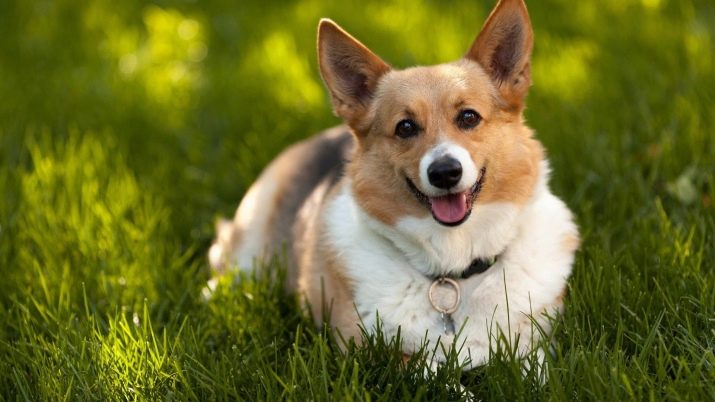
Origin history
The characteristic spot on the back of the Corgi was the reason for the mystical explanation of the appearance of these dogs. According to legend, these animals were used as mounts in the world of elves, supposedly from here on their backs and sites formed in the form of a saddle. In fact, the ancestors of the dogs of this breed were first brought by the Celts to Wales, which has since been considered the birthplace of the Corgi.
The breed received official recognition only in 1892. And recently, on an archaeological expedition, researchers found the remains of dogs resembling Corgi dating back to 500 BC. e.
According to one version, the very name of the dwarf dog appeared from the Welsh word "Corgi", meaning "dwarf". According to other researchers, “Corgi” is understood as “look after, guard”.
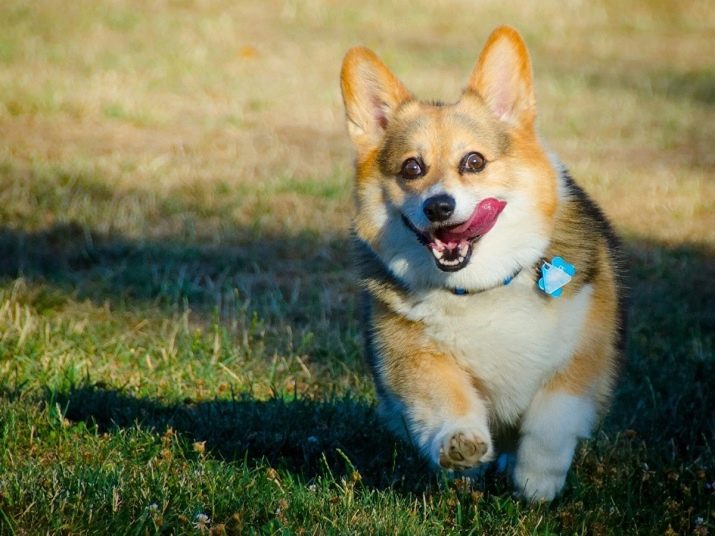
Breed description
According to the standard, a purebred dog of the breed presented must have the following external characteristics:
- the head has a wide skull, the face is like a fox;
- black nose;
- lips are tight, black color;
- scissor bite;
- eyes are oval, brown in color, the edges of the eyelids are dark;
- ears are medium, upright;
- the neck is long, flowing gently to the withers;
- the body is strong, the rib cage is round, the lower back is short;
- the tail may be short;
- forelegs strong, short, elbows pointing back, forearms bend inward;
- hind limbs are strong, elastic, have moderate angles;
- the coat is dense, medium length, with a short undercoat, slight waviness is possible;
- growth - 26-31 cm at the withers;
- weight: males - 13.5 kg (for the show - 12.2 kg), bitches - 12.6 kg (for the show - 11.3 kg).
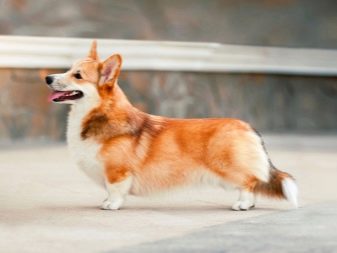
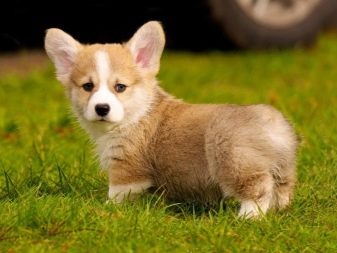
A deviation from the standard is considered if the dog has the following features:
- dislocation of the knee joint;
- lack of focus;
- snack;
- long muzzle;
- deep set eyes;
- long and fluffy coat.
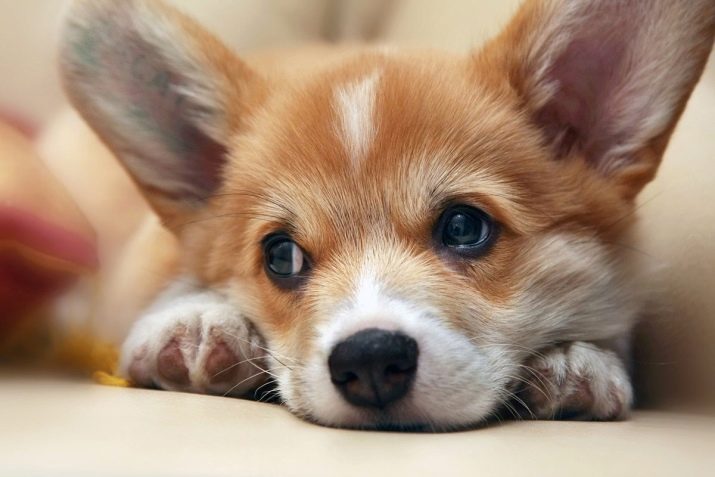
There are individuals that are not allowed to the exhibition. The reasons for this may be the following factors:
- going beyond acceptable sizes;
- hanging ears;
- inappropriate color;
- cowardice;
- aggression.

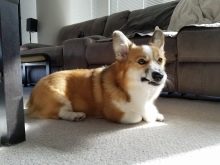
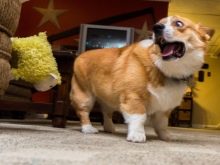
Character
Corgi are easily trained dogs, their talent can be used, for example, in agility. In addition to an inimitable mind, quick wit and obedience, Corgi is sensitive. For example, he always senses the mood of the owner, loves children and does not offend them, he is close to new people. Corgis get along well with other pets, although sometimes they can be jealous of the owner to their four-legged neighbor. Aggression in these animals is almost not manifested, therefore, they belong to companion dogs.
There are two breeds of corgi - cardigans and pembrokes. Two varieties differ not only in appearance, but also in character. For example, cardigans have a more serious disposition, they are always focused on exhibitions, try to perfectly execute a team, the opinions of others are not important for them. Pembrokes, on the contrary, are big lovers of human attention and try to charm every spectator, therefore, during the exhibition, these dogs can be distracted by others in order to check who they have not yet admired.
In general, both varieties have a pronounced tendency to obedience and quality training.
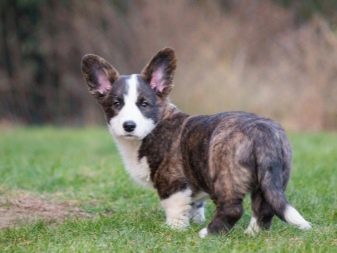
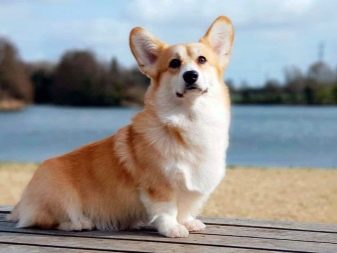
Life span
Cardigans and Pembrokes have a difference in appearance. Thus, a cardigan is characterized by larger dimensions than its short-legged congener, but Pembrokes have a slightly longer life span. Until recently, this variety belonged exclusively to working, shepherd breeds with excellent health, and their lifespan was limited to about 12-15 years.
Nevertheless, until so many years only dogs kept in responsible hands can live. The fact is that Pembrokes are prone to obesity, and this ailment shortens their life by 2-5 years. The maximum life span of a pembroke is 18-19 years.
The average life of a cardigan is 12-14 years, and the maximum is 17-18 years. Diseases such as Welsh Corgi of any kind can cause early death. glaucoma, rabies, epilepsy, allergies, raw eczema. All these diseases are often attacked specifically by representatives of this breed. To maximize the life of your pet, it is important to follow the vaccination schedule, treat the dog from parasites on time, regularly visit a veterinarian and take general tests.
The peculiarity of these dogs also lies in the fact that even at an advanced age, most of them maintain a lively mind, activity, and gaiety. But again, it depends on how responsibly the owner treats the contents of the pet.

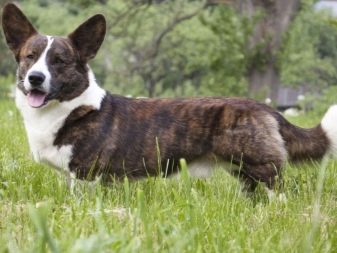
Types and colors
Cardigans and Pembrokes are the two main groups into which Corgis can be classified. Cardigan is a more massive dog., heavy, her back gently bending, and her stomach tightened. Its back is narrow. Pembroke is a smaller dog it has a lower mass, a less stretched body and a lighter skeleton.
There are differences between the dogs in coat structure and color. So, a cardigan is characterized by a rough coarse coat with tight-fitting hairs; in appearance, the dog looks neat and smooth.Pembroke also has a soft undercoat, elongated hairs on the chest and legs, which makes it seem a bit disheveled and shaggy. Excessively soft coat is not acceptable for any variety.
Cardigans are tiger or marble. Sometimes white spots are allowed on the coat, but white should not be predominant in the color of the dog.
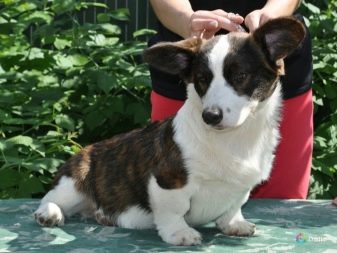
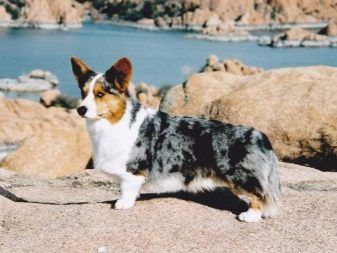
Pembrokes are characterized by such colors as red, sable, fawn, three-color (black and tan) In this case, an even smaller percentage of white areas is allowed. In general, two basic colors are considered the most common among pembrokes - red white and tricolor.
Sometimes gray corgi puppies are born, which eventually become red, and, for example, sable color is difficult to recognize in childhood, since black coating appears on the head and body only with age.
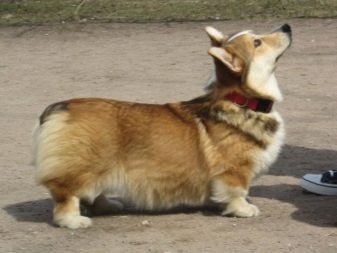
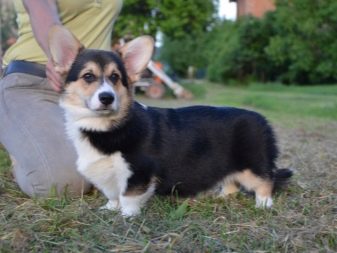
How to choose a puppy?
Before you go to get acquainted with the puppy, the potential owner needs to think about his lifestyle. If this is a homebody who prefers to bask in bed all weekend, it is better to give preference to another breed. Corgis are active, mobile creatures that require energetic loads, frequent jogging, regular training.
The owner of this dog should be a person who has free time for long walks and active activities with the pet. In addition, Corgis are contact creatures that need human communication. A very busy person will not be able to pay due attention to the dog and properly care for it, and therefore you need to think several times before getting a dog of this breed.
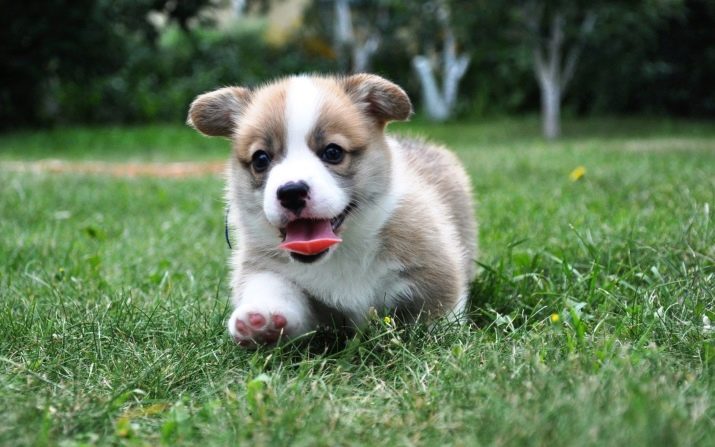
If the potential owner of the Corgi has taken into account all the features of the animal, then We recommend that you familiarize yourself with the following recommendations for choosing a puppy.
- Choose a dog calf from a breeder through a dog clubto be guaranteed to become the owner of a purebred puppy. Do not take the dog through the classifieds site.
- Choose a healthy and active puppy. He should be curious and not cowardly.
- For breeding and participation in exhibitions, a dog with a straight long tail without creases is suitable. If it is a Pembroke, then give preference to individuals with a short tail. For European events, dogs with a docked tail will not work.
- Thoroughbred Pembroke has dark brown eyes darker than hair. Marble cardigans can have both brown and blue eyes, specimens with different eyes are allowed.
- Thoroughbred corgi should have a medium-length coat. If you need a dog to participate in the exhibition, then refuse to buy a puppy with soft long hair, as this cute external feature is considered marriage and this individual will not be allowed to the exhibition.
- Do not forget to carefully study the entire pedigree and documents provided by the breeder. Make sure that this is a decent seller, look for reviews about him.

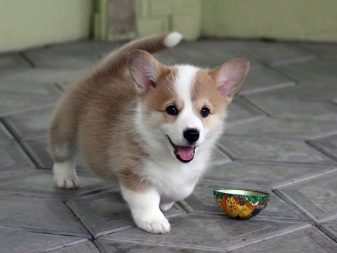
Maintenance and care
What to feed?
Corgi have a good appetite, which often becomes a real problem. Small gluttons tend to gain weight quickly.. An obese dog often develops diabetes, heart ailments, problems with blood vessels, digestive diseases. In addition, too dense dogs are not allowed to participate in the exhibition. To avoid these problems, it is important to find a balance between the consumed daily rate and physical activity.
For feeding it is better to get premium or super premium ready-to-eat dry food. Manufacturers usually indicate on the package the amount of a daily dose depending on the weight of the dog, but it is still recommended to consult a veterinarian on this issue. Let the doctor calculate the daily rate for a particular animal, taking into account age, weight and health.
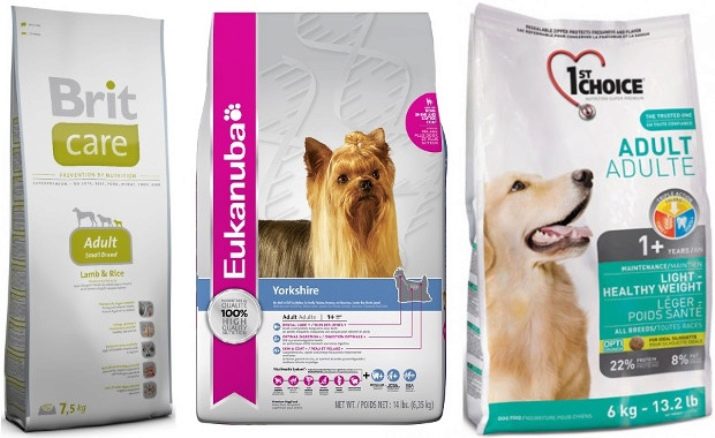
If the owner prefers natural feeding, then it is important to make protein food the basis of the diet. A third of the menu should be raw meat (except pork), processed for a couple of minutes with boiling water. Boiled liver and steamed sea fish are suitable. Also, the diet should include carbohydrates, for example, rice, buckwheat, raw and boiled vegetables. It is sometimes acceptable to treat a dog with boiled eggs.
Corgi and sour-milk products in a small amount will not harm. Excluding feeding sweets, smoked, salty, sour foods, food from the table. For a healthy diet, it's important to develop special schedule and feed the dog at a specific time.
Up to three months of age, puppies should be fed about 4-5 times a day. Further, the number of meals is reduced to 3-4 times, and from six months of age the dog needs to be transferred to 2-3 meals a day. It is recommended to feed the puppy just brought into the house with the same food as the breeder fed him. If the new owner is not satisfied with this type of feeding, then the transition to another diet should be made gradually.
In this case, in the early days, the owner must carefully monitor the condition of the puppy in order to identify allergies or gastrointestinal problems caused by the transition to a new feed. If the owner noticed any ailments, then it can be assumed that the puppy did not fit the new food.

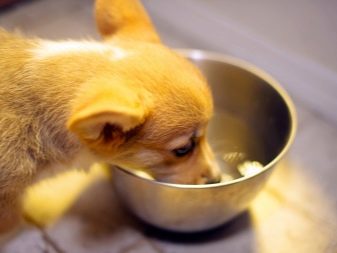
Breeders also recommend at first feeding the puppy unfamiliar food for him a little bit at the same time so as not to overfeed the still fragile body with new products. It is customary to clean the bowl of food after 10-15 minutes in order to accustom the dog to immediately eat the entire portion.
In the case of feeding the puppy with dry ready-made food, it is important to soak the granules in water until the age of three months, and the food without soaking is suitable for the older dog. When feeding dry food, the animal should always have free access to clean water. If the owner has chosen a natural type of feeding for the pet, it is important to supplement it with vitamins and minerals.
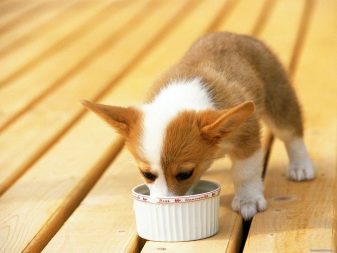
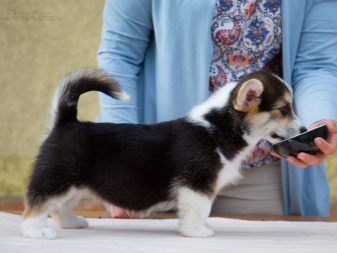
Parenting
Raising and training Corgi is quite simple. These dogs are distinguished by high intelligence and insight. For example, a dog who wants to play will not pester the owner with this, seeing that he is not in the mood. During training, all teams of this breed are instantly captured. Dog handlers give several recommendations for training corgi:
- as a reward for a correctly performed exercise, the pet should receive a treat;
- pronounce commands evenly, clearly, calmly, with the same intonation;
- Take breaks between classes for relaxation and games;
- do not let other people raise a dog;
- from the very first days of the appearance of a puppy in the house, show him that you are the owner.

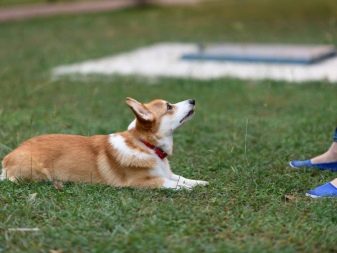
The first stage of education should be accustoming to the diaper. The fact is that before vaccination, dogs should not be allowed to go outside, and vaccinations begin no earlier than two months of age. Until this time, the dog will go to the toilet in the house and it will need to be trained in a diaper. To do this, it is recommended to put the diaper in a place convenient for the animal. If the pet went to the toilet to a different angle, then you need to moisten the diaper in liquid waste and leave it in the right place so that the dog smells where it needs to be emptied next time.
Once the vaccination period is over, the dog should be trained on a leash and collar. It’s better to start doing this before the first walk happens. First, it is recommended to introduce the pet to a leash at a distance, then put it next to a bench or bowl, so that the dog is convinced of the safety of a new object. For the first time, having attached a collar to the neck of an animal, one may encounter its resistance.
So that the pet does not try to remove an extraneous thing, you can distract it with games. Take a walk with the Corgi on a leash around the apartment, let him get used to the new subject before first appearing on the street.
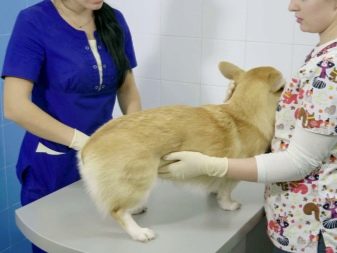
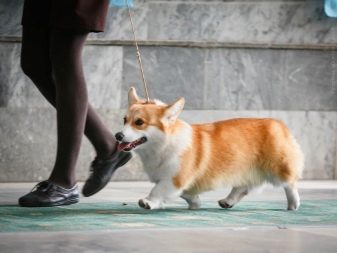
For this dog, active physical activity is important, therefore it is desirable to take the animal for a walk to those places where it can be lowered from the leash.Let it be a special dog playground. If you have access to a reservoir, then Corgi will be pleased to refresh in the water.
An important point in the upbringing is the timely stop of the amused pet. The fact is that due to the specific complexion, these dogs cannot be jumped, as these movements create too much stress on the fragile ligaments of the spine and joints. Seeing the puppy jumping too actively the owner needs to promptly stop these dangerous for the dog actions.
By the way, a feature of this breed is the ability to not freeze during a winter walk. The presence of warm undercoat saves the owner from buying expensive dog clothes. At half a year, Corgis begin to teach the basic commands "fu", "place", "lie", "sit". Later, herd gathering training begins.
Sometimes shepherd instinct is manifested. The dog can drive all the household members into one room, slightly biting his heels. Often you can watch how a puppy drags all the toys in one pile.
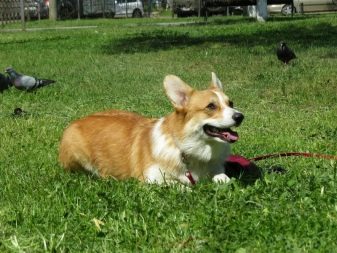
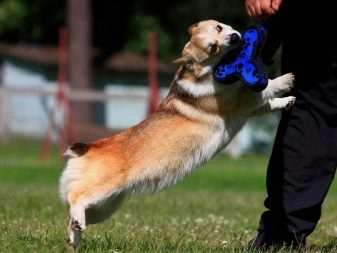
List of nicknames
There are no special rules in choosing a nickname for a corgi puppy. However, this name should be liked by the owner himself and be associated with something good. Then pronouncing a nickname will be more pleasant.
A name that is too long should not be chosen; it will be difficult for the dog to remember it. If the owner certainly wants to call the pet a beautiful long foreign name, then it is better to reduce the hard-pronounced name in the usual way. For example, if it is Cleopatra, then let the dog get used to the nickname Clepe or Cleo, and Cassiopeia can be shortened to cassie.
You can name the dog in honor of his favorite place, city or even a car brand or model. Now you can meet quite a few Corgi, whose name is Mazda, Lexus, Vesta, Lambo. It is allowed to give the dog the name of his beloved domestic or foreign artist: Bilan, Timati, Nyusha, Sogdiana, Bieber, Aguilera, Beyonce.
Corgi seem to be very cute, who received a name by the name of food: Korzhik, Cake, Bun, Pelmeshka, Pizza, Marshmallow.
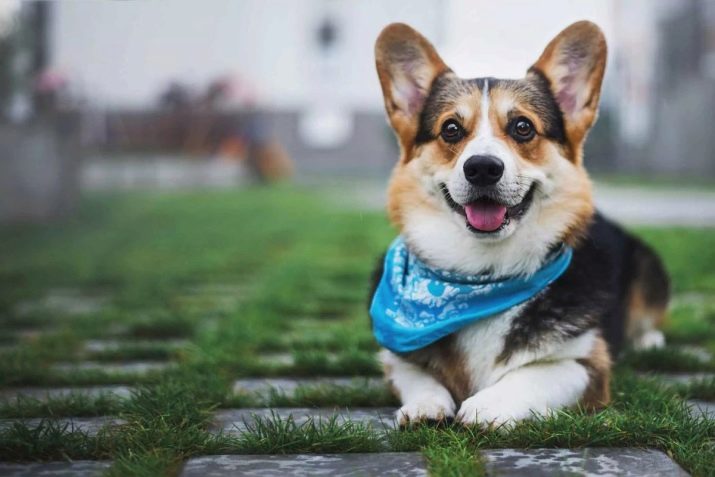
Art lovers can seek help from literary works and their authors (Pushkin, Byron, Shakespeare, Hamlet). Do not forget about the famous dogs: Squirrel, Arrow, Balto, Hachiko. You can recall the characters of cartoons and films: Marley, Milo, Lassie, Volt, Scooby-Doo.
The following neutral names are offered for boys: Archie, Barney, Lloyd, Eugene, Casper, Monty, Caesar, Oliver, Rolf, Chase, Henry, Justin, Buddy, Sheldon. Corgi girls like these nicknames: Jesse, Alma, Suzy, Sheldi, Stacy, Goldie, Perry, Lucky, Nick, Sandra, Bella, Fiona.

Corgi of Queen Elizabeth II
Elizabeth II is famous for her love for the representatives of this breed. For all her life she had at least 30 Corgi dogs. She knows almost all the famous breeders in the UK, and in the 50s the queen independently bred a new variety of the breed - dorgi. The dog was obtained by crossing corgi and dachshund, however, the specimen is still not recognized by expert dog handlers.
Queen's dogs rarely participated in exhibitions, since, according to their mistress, the pets there was absolutely nothing to prove. In addition, the owner never sold her favorites, but always gave in good hands. Basically, the owners of Elizabeth herself became the new owners of the royal puppies.
For each pet, the queen set a sleeping basket in her residence so that all the dogs would sleep warmly, not on the floor or in the draft. Royal Corgi's food has always been top notch. Corgi and Dorgi menus were developed by the best veterinarians and chefs at Buckingham Palace. The basis of the diet was special biscuits, steaks, poultry and rabbit meat.
Each individual ate from its own saucer of porcelain and silver. Each serving included a carefully calculated amount of medicines and vitamins.
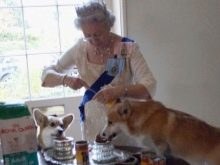

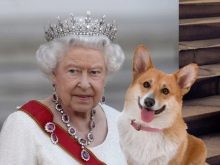
The queen often herself was engaged in the upbringing and training of her favorites.. For example, she taught young individuals to skip ahead to eating more adult relatives. In general, nutrition was given almost a key place in the content of the royal corgi. So, one footman-joker who added whiskey and gin to a dog’s saucer for humor was fired by the queen with scandal in 1999.
In connection with her love for this breed, Elizabeth II is often depicted embracing her beloved dogs. Even Corgi monuments were built, and in 2012 three royal dogs appeared along with hostess and actor Daniel Craig in a short video about the adventures of James Bond, dedicated to the Olympic Games in London.
It is very difficult for the queen to endure the death of every pet. Almost all individuals are buried in Sandringham in a separate cemetery. The last royal Corgi, nicknamed Willow, passed away at the age of 14 on April 15, 2018.
The dog suffered from oncology for a long time, and then the queen agreed to euthanasia. On that day, a whole page of her life closed for Elizabeth at Windsor Castle.

Owner reviews
Corgi owners respond very positively about their pets. Pembroke character traits such as good nature, friendliness, sensitivity, playfulness are noted.. These dogs love to communicate with people.
Among the pluses, devotion stands out, which is compared with the loyalty of the shepherd. This is no coincidence, because the Welsh Corgi belong to the shepherd family. In addition, the owners like that these dogs rarely bark.
Cardigan owners say that these dogs are more serious and thoughtful, they, like Pembrokes, do not mind playing, but they choose more appropriate time and place for this activity. That is, for example, during training, the cardigan will not be distracted by the game.
It is noted that cardigans are less jealous when shared with other pets than pembrokes. In general, both varieties relate well to children, quickly learn teams, and listen well to the owner.
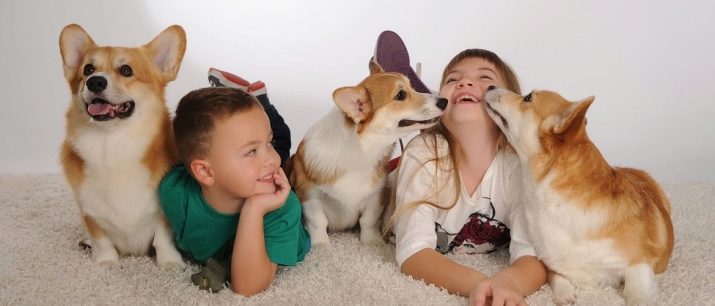
About the features of the Corgi breed, see below.
